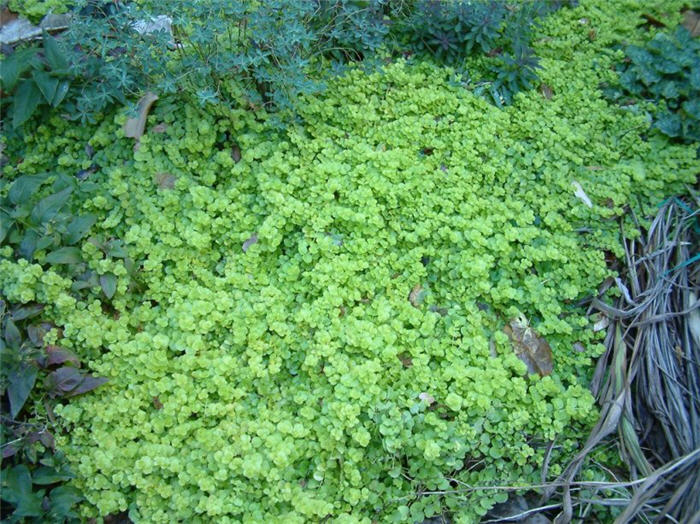| Botanical Name: Lysimachia nummularia | |
| Common Name: Creeping Jenny, Moneywort |

-
Anatomy
-
Culture
-
Design
Plant Type
Ground cover, Perennial
Height Range
Under 1'
Flower Color
Yellow
Flower Season
Spring, Summer
Leaf Color
Green, Light Green, Yellow Green
Bark Color
n/a
Fruit Color
n/a
Fruit Season
n/a
Sun
Half, Shade
Water
Medium, High
Growth Rate
Fast
Soil Type
Sandy, Clay, Loam, Rocky, Unparticular
Soil Condition
Average, Rich, Well-drained, Moist
Soil pH
Neutral
Adverse Factors
Invasive
Design Styles
Japanese, Meadow, Water Garden, Woodland
Accenting Features
Showy Flowers
Seasonal Interest
Spring, Summer, Fall
Location Uses
Entry, Shrub Border, Raised Planter, Walls / Fences, Walkways
Special Uses
Cascade, Container, Filler, Mass Planting, Hanging Baskets
Attracts Wildlife
n/a
Information by: Stephanie Duer
Photographer: Modesto Jr. College
Photographer: Modesto Jr. College
-
Description
-
Notes
Creeping Jenny is a trailing groundcover that grows in most situations, but prefers shade and moderate moisture. Its yellow fragrant flowers have 5 rounded petals nestled in the round leaf pairs in May and June. It forms dense mats that can become invasive, but is well suited as a ground cover with larger, woody shrubs. Is attractive in rock walls and cascading out of pots. There are cultivars available, ones with yellow to chartreuse foliage.
Grow in well drained soil and full sun to part shade; it will even grow in full shade. In fact, it will probably grow anywhere. Easily propagated by either divisions or cuttings. Is slightly less assertive when grown in drier conditions. Given its prolific nature, avoid using in riparian corridor areas, as it has escaped "into the wild."